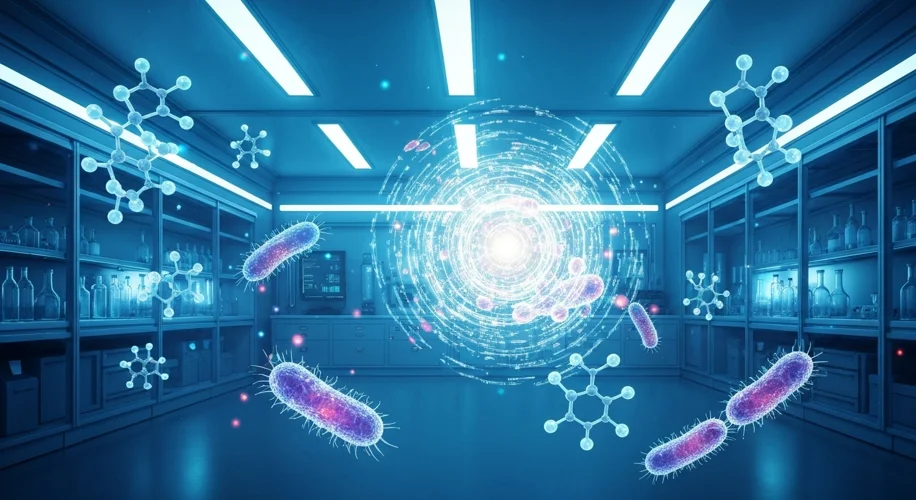Did you know that some bacteria are becoming so resistant to our current medicines that they’re being called “superbugs”? It’s a serious global health challenge, and we need new tools to fight back. That’s where artificial intelligence, or AI, is stepping in, and it’s showing incredible promise.
Researchers have recently used generative AI to design entirely new compounds that can actually kill these drug-resistant bacteria. This isn’t just theoretical; it’s happening now, and it’s a significant step forward.
How Does It Work?
Imagine you have a complex lock that needs a very specific key. For years, scientists have been trying to find or create keys (antibiotics) that fit the locks (bacteria) to disable them. But with drug-resistant bacteria, the locks keep changing, making our old keys useless.
Generative AI models are like super-smart locksmiths. They can learn the intricate structures of bacteria and then design completely new keys from scratch. In some cases, these AI models can start with just a single atom and build up a potential antibiotic compound from there. It’s a bit like an artist creating a sculpture, but instead of clay, it’s molecular structures, and instead of aesthetics, it’s biological function.
Targeting Tough Enemies
One of the most exciting applications of this technology has been in developing new treatments for incredibly stubborn infections. For instance, researchers have used AI to design compounds that are effective against notorious bacteria like MRSA (Methicillin-resistant Staphylococcus aureus), a common cause of difficult-to-treat infections, and even bacteria that cause gonorrhea, which is becoming increasingly resistant to antibiotics.
This isn’t about finding a slightly modified version of an existing drug. This is about creating truly novel molecules that bacteria haven’t encountered before, potentially giving us a new way to outsmart them.
The Science Behind the Magic
These AI models are trained on vast amounts of data, learning about existing molecules and their properties. Then, using generative techniques, they can explore chemical spaces that human intuition might never reach. They predict how different molecular structures will interact with bacteria, identify potential antibacterial activity, and even consider factors like toxicity to human cells. The goal is to find compounds that are potent against the bacteria but safe for us.
This approach dramatically speeds up the discovery process. Traditionally, finding a new antibiotic could take many years and involve a lot of trial and error. AI can sift through millions of possibilities in a fraction of the time, identifying promising candidates much faster.
What This Means for Us
The rise of antibiotic resistance is a serious concern, often referred to as a “silent pandemic.” The ability to design new antibiotics using AI offers a much-needed glimmer of hope. It means we might have a better chance of treating infections that are currently untreatable, saving lives, and preserving the effectiveness of modern medicine.
While this technology is still developing, its potential is undeniable. It’s a fantastic example of how advanced technology can be harnessed to solve some of our most pressing scientific and health challenges. It’s exciting to think about what other medical breakthroughs AI might help us achieve in the future. I’m learning alongside you on this journey, and this development is certainly one to watch!

